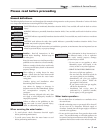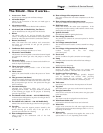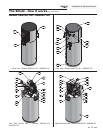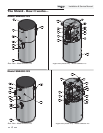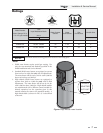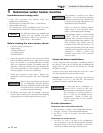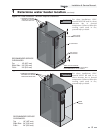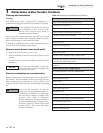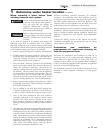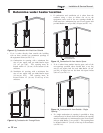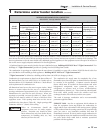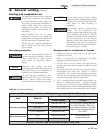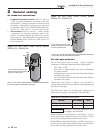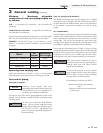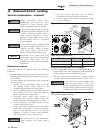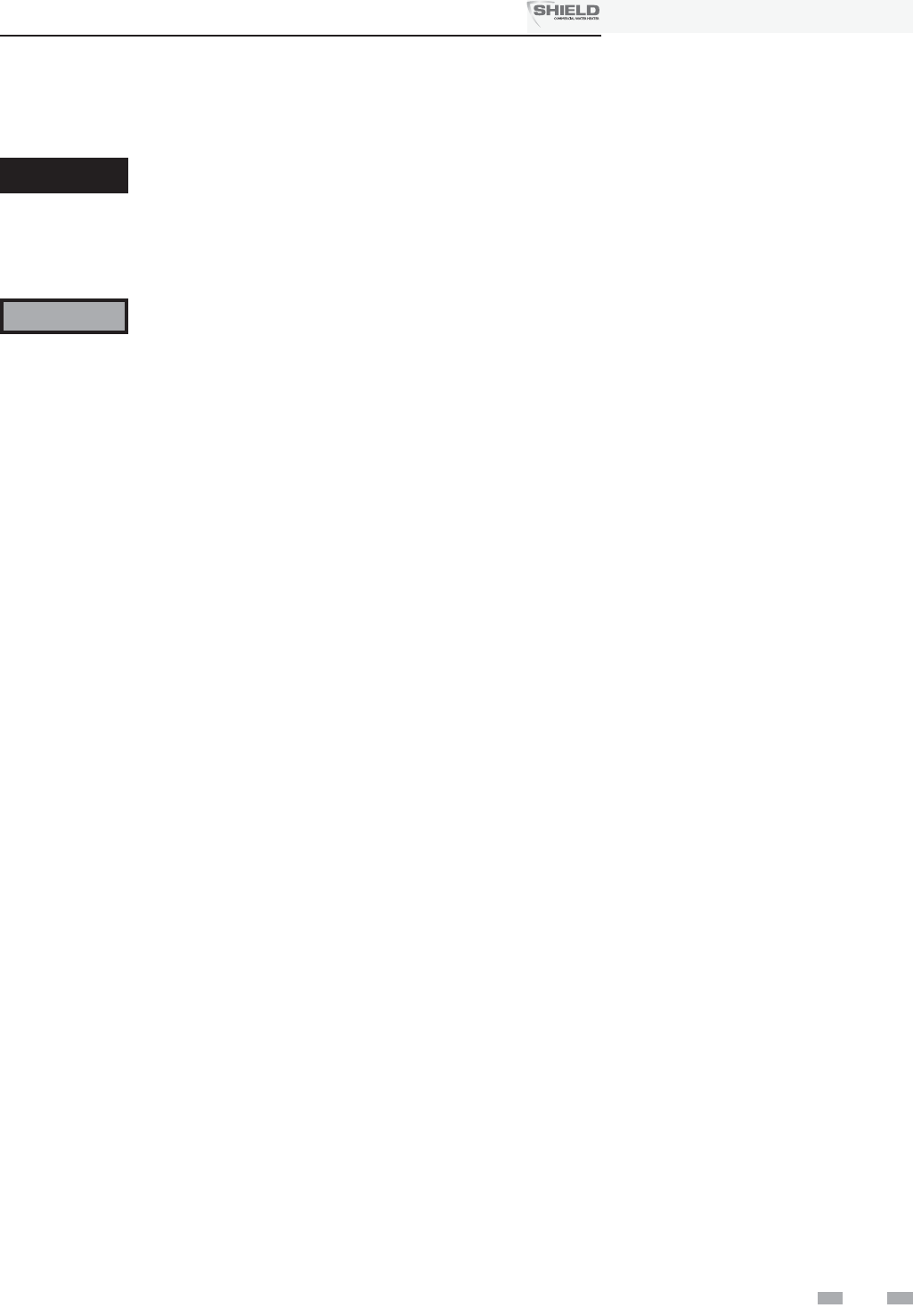
When removing a water heater from
existing common vent system:
Do not install the Shield water heater into
a common vent with any other appliance.
This will cause flue gas spillage or
appliance malfunction, resulting in
possible severe personal injury, death, or
substantial property damage.
Failure to follow all instructions can result
in flue gas spillage and carbon monoxide
emissions, causing severe personal injury
or death.
At the time of removal of an existing water heater, the
following steps shall be followed with each appliance
remaining connected to the common venting system placed
in operation, while the other appliances remaining connected
to the common venting system are not in operation.
a. Seal any unused openings in the common venting system.
b. Visually inspect the venting system for proper size and
horizontal pitch and determine there is no blockage or
restriction, leakage, corrosion, or other deficiencies,
which could cause an unsafe condition.
c. Test vent system – Insofar as is practical, close all building
doors and windows and all doors between the space in
which the appliances remaining connected to the
common venting system are located and other spaces of
the building. Turn on clothes dryers and any appliance
not connected to the common venting system. Turn on
any exhaust fans, such as range hoods and bathroom
exhausts, so they will operate at maximum speed. Do not
operate a summer exhaust fan. Close fireplace dampers.
d. Place in operation the appliance being inspected. Follow
the lighting instructions. Adjust thermostat so appliance
will operate continuously.
e. Test for spillage at the draft hood relief opening after
5 minutes of main burner operation. Use the flame of a
match or candle, or smoke from a cigarette, cigar, or pipe.
f. After it has been determined that each appliance
remaining connected to the common venting system
properly vents when tested as outlined herein, return
doors, windows, exhaust fans, fireplace dampers, and any
other gas-burning appliance to their previous conditions
of use.
g. Any improper operation of the common venting system
should be corrected so the installation conforms with the
National Fuel Gas Code, ANSI Z223.1/NFPA 54 and/or
CAN/CSA B149.1, Natural Gas and Propane Installation
Code. When resizing any portion of the common venting
system, the common venting system should be resized to
approach the minimum size as determined using the
appropriate tables in Part 11 of the National Fuel Gas
Code, ANSI Z223.1/NFPA and/or CAN/CSA B149.1,
Natural Gas and Propane Installation Code.
ƽ DANGER
ƽ WARNING
1 Determine water heater location (continued)
Combustion and ventilation air
requirements for appliances drawing air
from the equipment room
Provisions for combustion and ventilation air must be in
accordance with Air for Combustion and Ventilation, of the
latest edition of the National Fuel Gas Code, ANSI Z223.1, in
Canada, the latest edition of CGA Standard B149 Installation
Code for Gas Burning Appliances and Equipment, or applicable
provisions of the local building codes.
The equipment room MUST be provided with properly sized
openings to assure adequate combustion air and proper
ventilation.
Maintain minimum specified clearances for adequate
operation. All installations must allow sufficient space for
servicing the vent connections, water pipe connections, piping
and other auxiliary equipment, as well as the appliance. The
clearance labels on each appliance note the same service and
combustible clearance requirements as shown above.
Multiple appliances may be installed in a modular water heater
installation. Multiple appliances may be installed side by side
with no clearance between adjacent appliances because this
appliance is approved for zero clearance from combustible
surfaces.
Consult the Vent ing section of this manual for specific
installation instructions for the appropriate type of venting
system that you will be using.
11
Installation & Service Manual
TM



